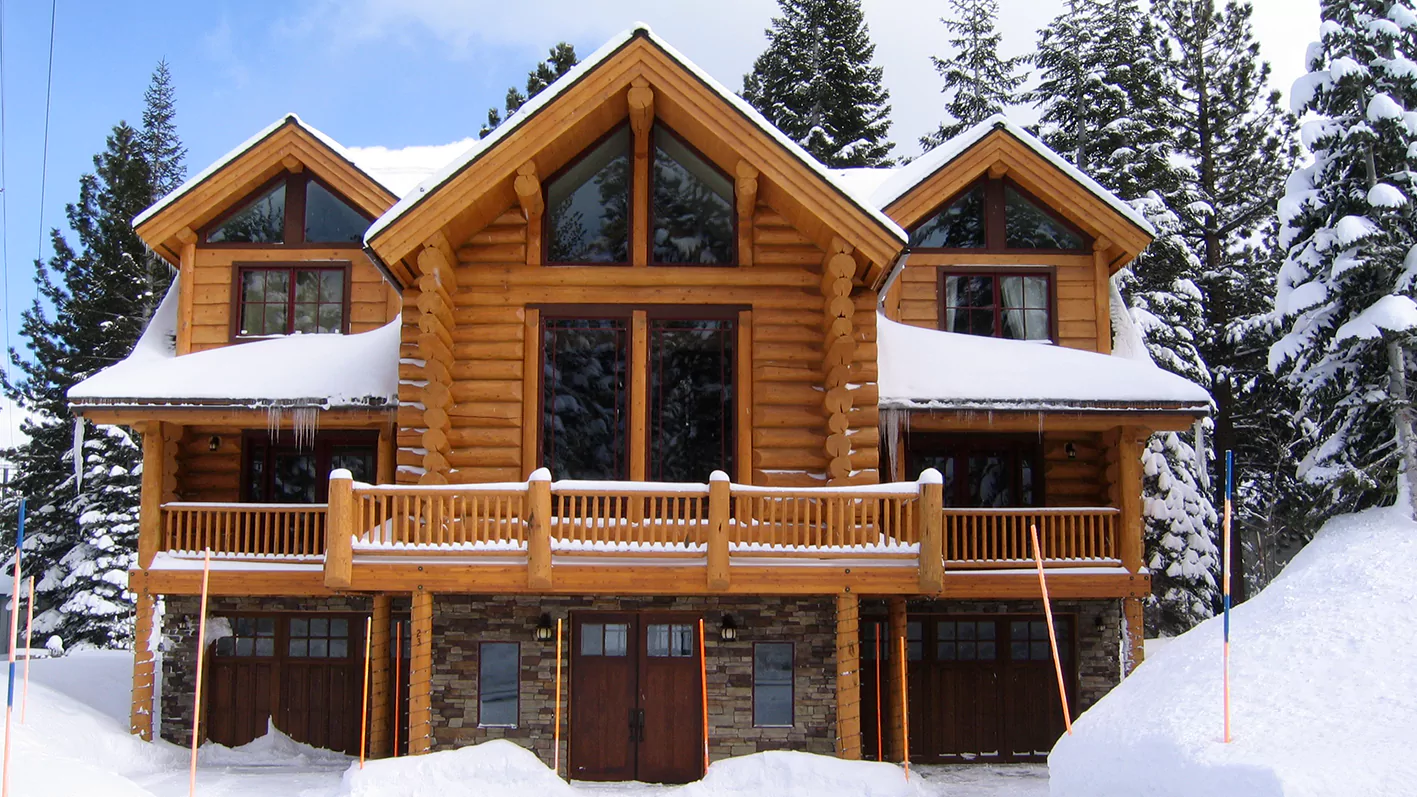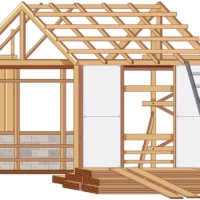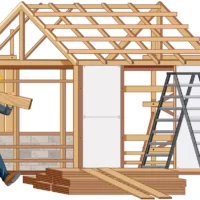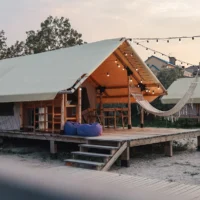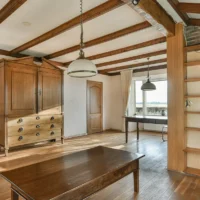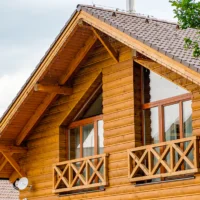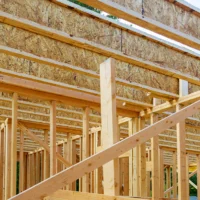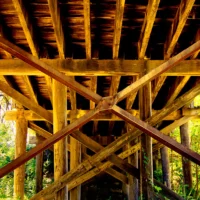Table of Contents
Introduction
When it comes to creating a warm, nature-inspired look for your home, few options rival the timeless appeal of half log siding. Whether you’re building a mountain retreat or simply love the cozy cabin aesthetic, half log siding delivers rustic charm—without the challenges of full log construction. If you’re considering this style for your home, it’s essential to understand what it is, why it’s popular, and how to avoid common pitfalls.
Half Log Siding Explained
What Is Half Log Siding?
Half log siding is a type of exterior cladding designed to mimic the look of a traditional log cabin—without the cost or complexity of full log construction. Unlike full logs, half logs are milled to have a flat back and rounded front, making them easier to install on standard frame construction.
These “half logs” are typically made from natural wood, engineered wood, or even steel with a wood-looking finish. The result? A beautiful, rugged appearance that gives your home the feeling of a log cabin, while maintaining modern construction efficiency.
Half Log vs Full Log vs Quarter Log Siding
- Full log siding uses entire logs stacked horizontally, which requires specialized construction, insulation, and maintenance. It’s heavy, expensive, and labor-intensive.
- Quarter log siding offers a slightly thinner profile with less rounded curvature—ideal for subtle rustic finishes or interior accent walls.
- Half log siding strikes the perfect middle ground. It offers a robust, rounded log appearance that’s easier to install, lighter on your budget, and more flexible in design.
Why It’s the Perfect Blend of Rustic and Practical
Half log siding delivers the authentic look of a log home without the structural and maintenance demands. You can apply it to any framed structure, giving your home that lodge-style appearance with enhanced energy efficiency, easier installation, and lower long-term costs.
Top Reasons to Choose Half Log Siding for Your Home
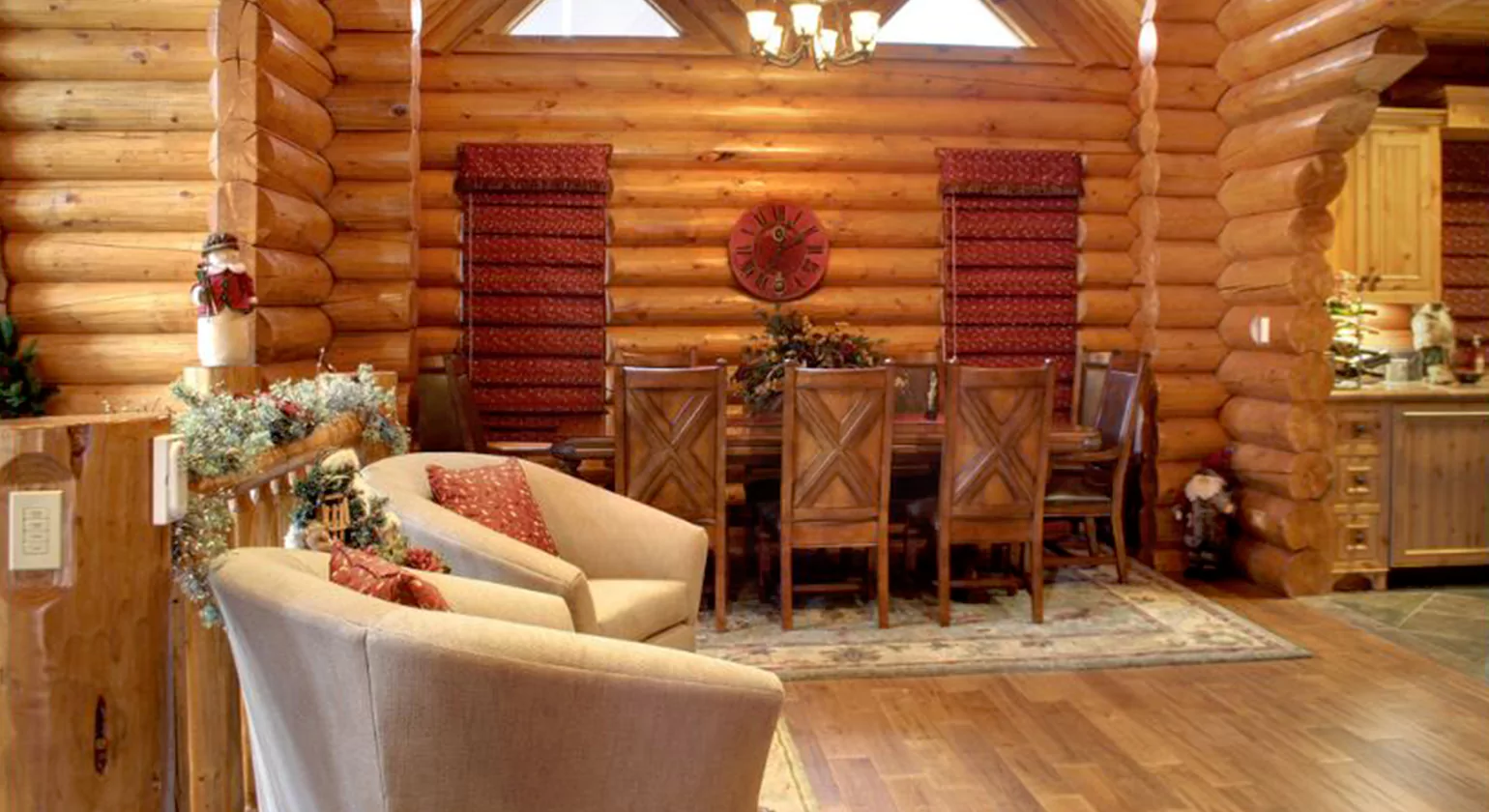
Authentic Cabin Look Without the Cost
Want the log cabin to feel without the full log price tag? Half log siding offers a cost-effective way to achieve high-end rustic aesthetics. It eliminates the need for custom log architecture while still showcasing the knots, grains, and warmth of real wood (or hyper-realistic synthetic versions).
Energy Efficiency and Thermal Benefits
Thanks to its natural density, wood provides insulation, helping your home stay cooler in the summer and warmer in the winter. Combined with modern sheathing and insulation techniques, half log siding contributes to improved thermal performance—a huge bonus for energy-conscious homeowners.
Steel or engineered half log alternatives also come with insulated backing and tight seals that enhance energy savings even further, especially in harsh climates.
Increased Home Value and Curb Appeal
Homes with half log siding often stand out in listings thanks to their unique and inviting exterior. Whether you’re selling or staying, the rustic yet upscale look of log siding can increase perceived value and attract more attention from potential buyers.
Easy Upkeep Compared to Full Logs
While full log homes demand constant maintenance (chinking, staining, checking), half log siding reduces those responsibilities significantly. With proper installation and sealing, half log siding is low maintenance, especially if you choose modern materials like steel or engineered wood.
Common Half Log Siding Problems and How to Avoid Them
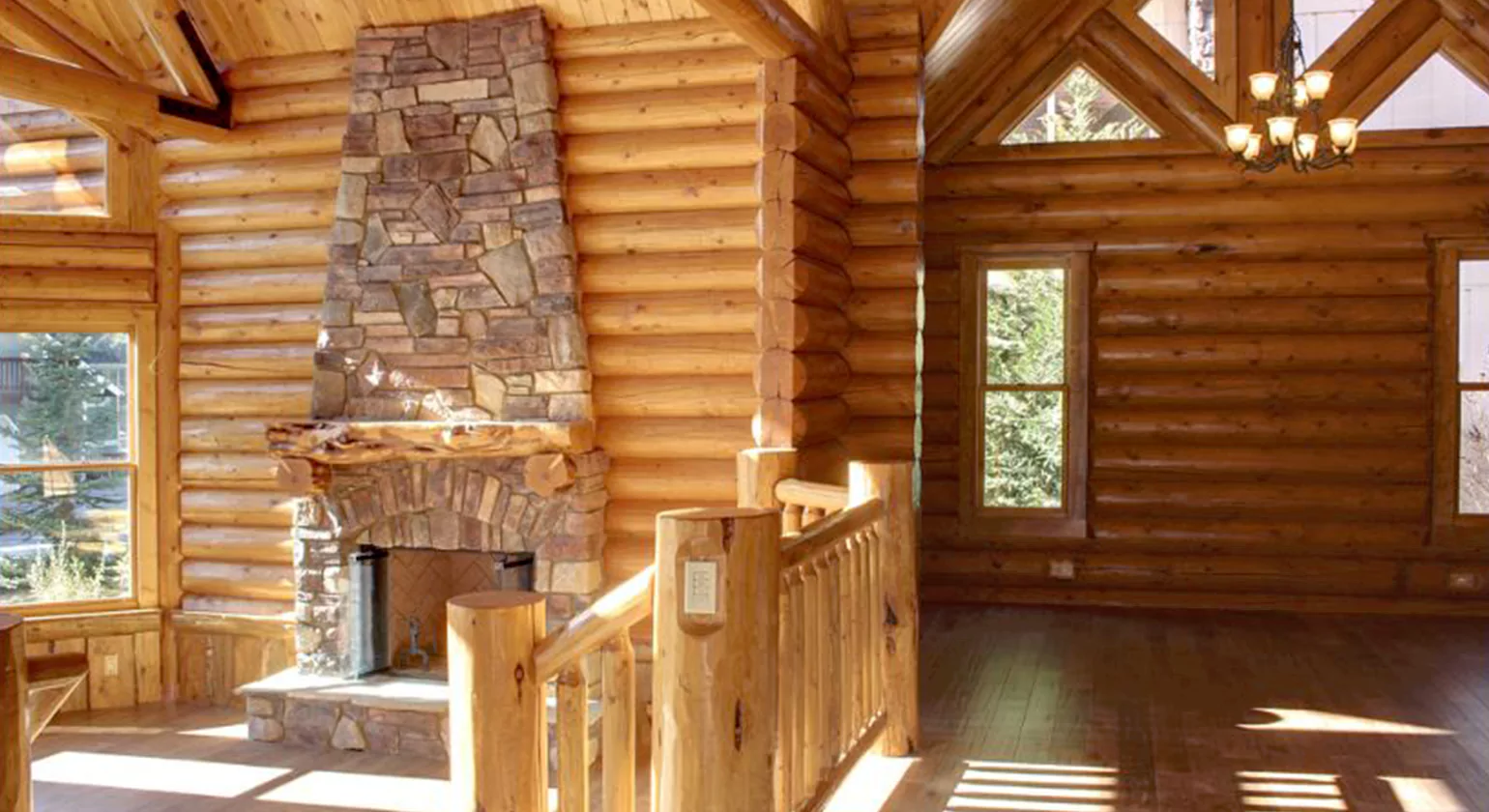
Moisture and Rot: What You Need to Know
One of the top concerns with any wood-based exterior is moisture. Wood absorbs water, which can lead to warping, mold, or rot if left untreated. Prevent this by:
- Installing a high-quality moisture barrier behind the siding
- Using a protective stain or sealant
- Performing routine inspections to spot and seal problem areas
Pro tip: If you’re in a high-moisture area, consider faux or steel half log siding for better resistance.
Pest Protection for Wood-Based Siding
Termites, carpenter ants, and beetles love wood—and untreated siding is an open invitation. To prevent infestations:
- Use pressure-treated or kiln-dried wood
- Apply borate-based treatments
- Seal all gaps and joints
- Trim vegetation away from siding to reduce pest access
For maximum peace of mind, modern steel or composite log siding eliminates pest problems entirely.
High Maintenance Myths vs Reality
Some believe that all log siding is high maintenance—but that’s not the case with half log siding. Especially when made from engineered materials, maintenance typically involves:
- A quick wash once or twice a year
- Reapplying sealant every few years (for wood)
- Checking for gaps or cracks in extreme weather
Steel or faux-wood siding, on the other hand, requires virtually no maintenance while retaining that rustic visual.
Fire Safety Tips for Rustic Exteriors
Natural wood is flammable, which can pose a risk in wildfire-prone areas. However, you can boost fire safety by:
- Choosing fire-retardant-treated wood siding
- Installing spark arrestors on chimneys
- Clearing brush and debris away from your home’s exterior
- Upgrading to Class A fire-rated siding like steel half log options
Best Materials for Half Log Siding in 2025
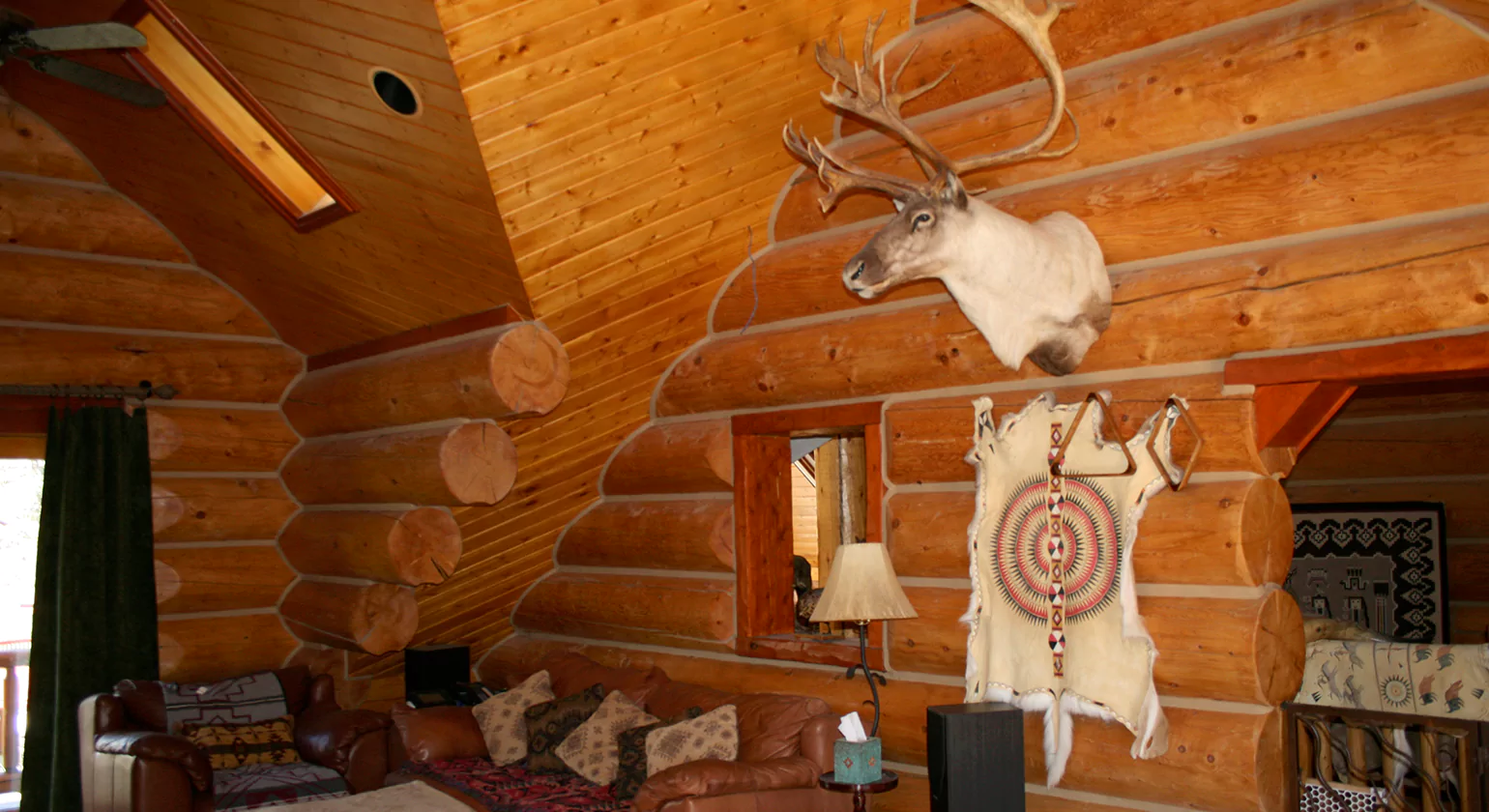
Choosing the right material is one of the most important decisions when investing in half log siding. In 2025, homeowners have more durable and beautiful options than ever before, from traditional woods to modern innovations. Here’s what you need to know.
Natural Wood Options: Pine, Cedar & More
For purists who want the most authentic log cabin look, nothing beats natural wood. Common choices include:
- Pine: Affordable and easy to stain but requires more maintenance.
- Cedar: Naturally resistant to rot and insects, with a rich grain and distinct scent.
- Douglas Fir: Durable and strong, ideal for structural and aesthetic siding.
- Cypress: High resistance to decay and bugs but can be pricier.
Natural wood gives you a warm, organic feel, but it does require regular sealing and protection against moisture and pests.
Engineered Wood Siding: Benefits and Drawbacks
Engineered wood is a cost-effective alternative that combines wood strands or fibers with resins and waxes. It’s designed to be:
- More resistant to moisture and rot than raw wood
- Easier to install with consistent sizing
- Lower in cost than high-grade cedar or fir
However, it may not deliver the same level of realism in grain or texture and may eventually delaminate if not properly maintained. Still, for many homeowners, engineered wood hits a sweet spot between price and performance.
Steel Half Log Siding: Modern Rustic Innovation
In 2025, steel log siding has taken center stage as the best of both worlds: rustic design with modern durability. Brands like TruLog offer steel siding panels that are:
- Fire-resistant (Class A rated)
- Virtually maintenance-free
- Pest-proof and resistant to rot and warping
- Designed with realistic wood grain patterns
Steel siding is perfect for homeowners who want the log cabin look without ongoing upkeep. It’s also ideal for properties in wildfire-prone or moisture-heavy areas.
Material Comparison: Cost, Durability, and Appearance
When choosing the best material for half log siding, it’s essential to consider long-term value—not just initial cost. Each material brings its own strengths and drawbacks.
Pine wood is a budget-friendly option that offers a classic, rustic look. It’s easy to stain and shape but requires regular maintenance due to moderate durability. Moisture, pests, and UV exposure can wear it down quickly if not properly treated.
Cedar wood is a premium natural wood siding known for its rich grain and superior resistance to rot and insects. It costs more than pine but lasts longer with moderate upkeep, making it a great option for homeowners who want both beauty and strength.
Engineered wood siding combines wood fibers with resins for improved stability and uniformity. It’s more affordable than cedar and offers good durability with a consistent appearance. Maintenance is moderate, making it a solid middle-ground choice.
Steel half log siding delivers the rustic log look with modern performance. It’s fire-resistant, pest-proof, and virtually maintenance-free. While the upfront cost is higher, it offers excellent long-term value with realistic wood grain textures that don’t fade or warp.
Each material offers a unique balance of cost, durability, appearance, and maintenance, helping homeowners make the right choice for their needs.
How to Install Half Log Siding Like a Pro
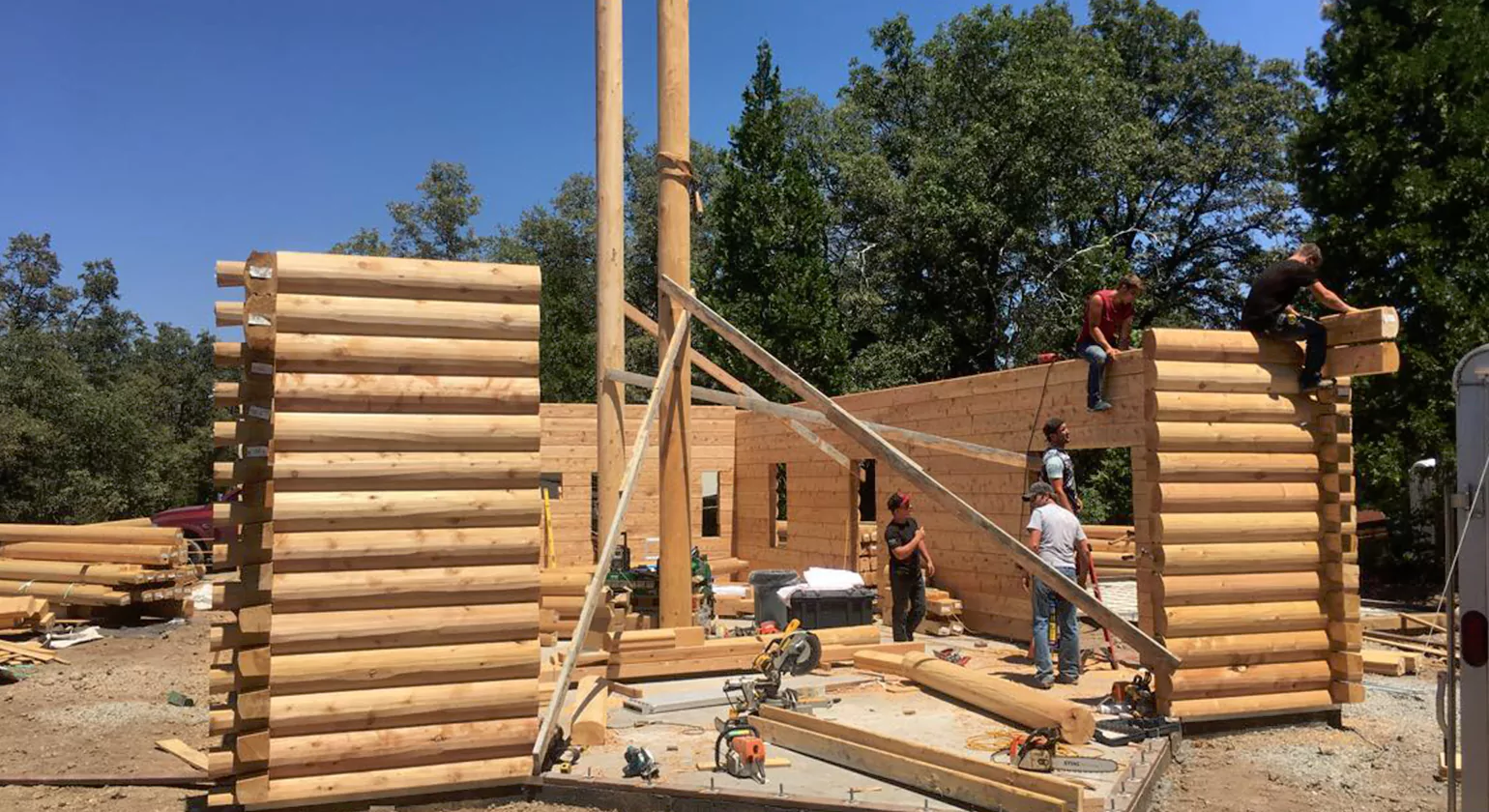
Whether you’re going DIY or hiring a contractor, proper installation is key to ensuring the siding performs beautifully for years. Here’s a breakdown of how to get it done right.
Pre-Installation Planning Checklist
Before you install, be sure to:
- Measure all exterior walls to estimate the material needed
- Check for moisture issues or wall damage
- Choose the right insulation and vapor barriers
- Purchase starter strips, fasteners, caulking, and sealants
Proper planning prevents waste and ensures a long-lasting result.
Tools and Supplies You’ll Need
- Circular saw or miter saw
- Level and chalk line
- Hammer or nail gun
- Caulk gun
- Exterior-grade fasteners
- Moisture barrier wrap
- Safety gear (gloves, goggles, etc.)
Having the right tools on hand ensures a clean, secure fit for each piece.
Step-by-Step Installation Instructions
- Wrap the walls with a moisture barrier (like Tyvek) and install insulation if needed.
- Install the starter strip at the base, keeping it perfectly level.
- Begin placing the half log siding from the bottom up, interlocking each row.
- Nail or screw the siding into place, ensuring tight fits at seams and joints.
- Use corner pieces and trim to finish the edges.
- Apply sealant or stain as needed, especially for wood siding.
Take your time with alignment—it makes a major difference in the final appearance.
Pro Tips for Clean Edges and Tight Corners
- Pre-cut around windows and doors to avoid messy overlaps.
- Use matching corner pieces for a seamless log effect.
- Hide fasteners beneath overlapping log faces whenever possible.
- Check each row with a level before continuing to avoid “sloping” walls.
Attention to detail results in professional-grade curb appeal.
Half Log Siding Maintenance and Care
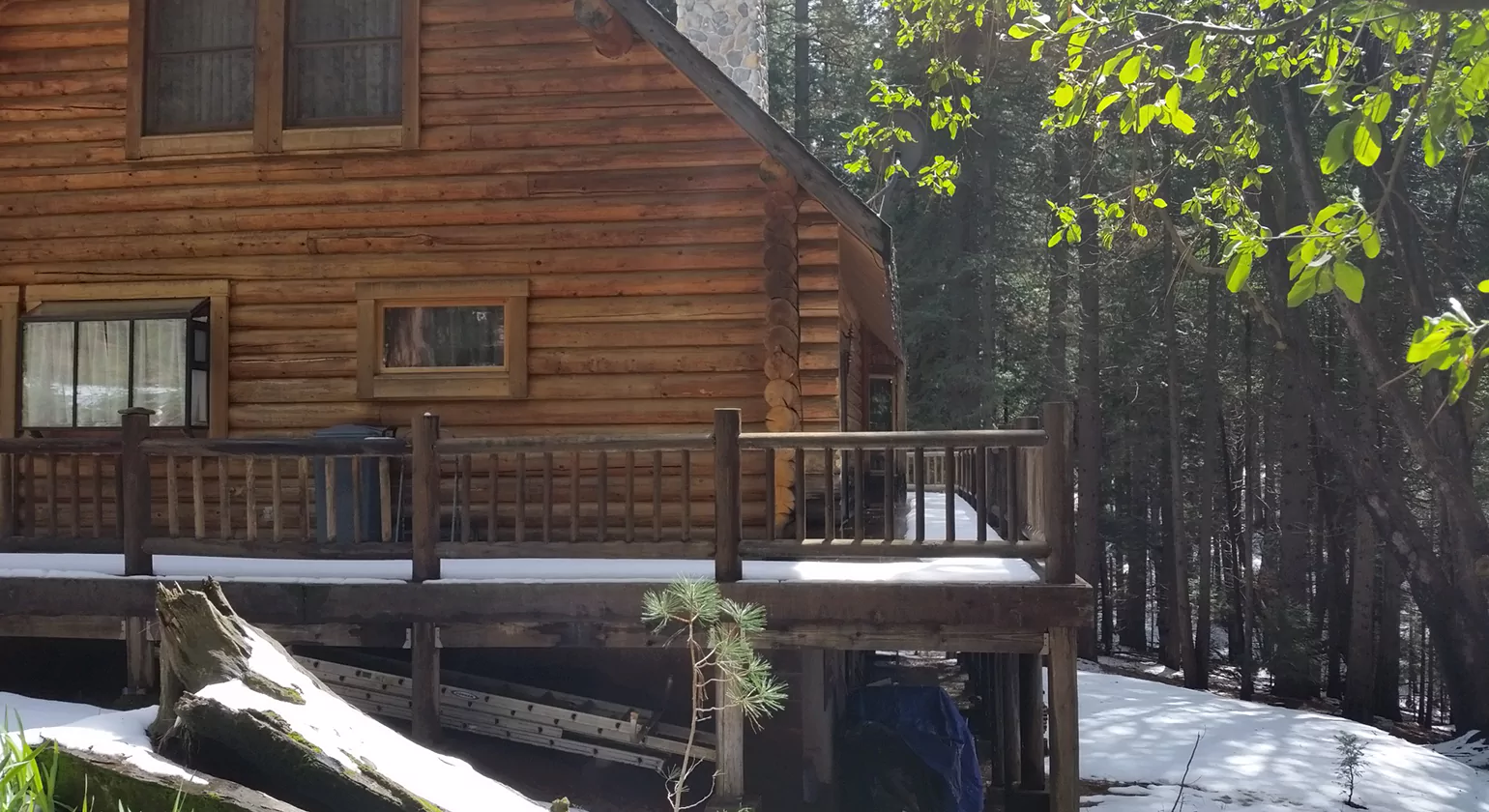
No matter the material you choose, regular care ensures your half log siding looks great and lasts for decades.
Annual Cleaning Schedule for Longevity
Even maintenance-free materials like steel benefit from a light cleaning:
- Use a soft-bristle brush or pressure washer on low settings.
- Remove dirt, mildew, and pollen buildup at least once a year.
- For wood, inspect and clean siding every spring and fall.
Keeping siding clean prevents staining, algae growth, and material decay.
Resealing and Restaining Best Practices
Wood siding needs to be restained or resealed every 3–5 years, depending on climate exposure.
- Use a UV-protective stain or sealant
- Apply during dry, mild weather for best results
- Strip old finishes before reapplying new coatings
This protects the wood against moisture, UV rays, and bugs.
Preventing Mold, Cracking, and UV Damage
- Trim back bushes and trees to promote airflow
- Fix downspouts and gutters to prevent splash-back
- Use breathable stains or sealants to avoid trapping moisture
- Install flashing above windows and doors to divert rain
Prevention is key to avoiding expensive repairs down the road.
How to Spot and Repair Early Wear
Be proactive by checking for:
- Cracks or splitting in the wood
- Signs of insect damage
- Loose or warped panels
- Water stains or discoloration
Replace damaged sections immediately, reseal exposed wood, and keep fasteners tight to extend the life of your siding.
Finishing Touches: Styling and Design Hacks
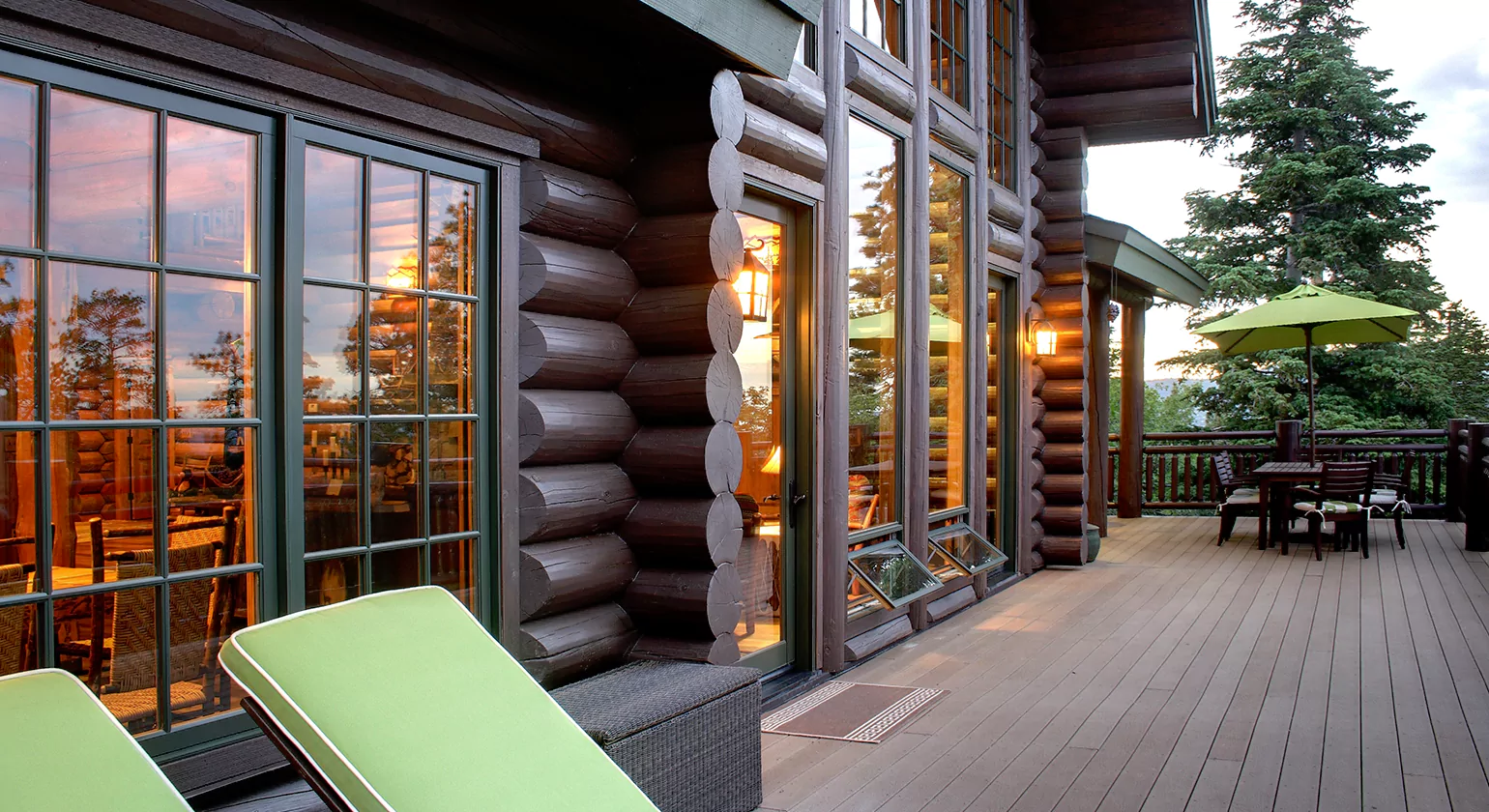
Getting the half log siding installed is just the beginning—how you finish and style it makes all the difference in achieving that flawless rustic look. Here are a few expert-approved design hacks:
Choosing the Right Stain or Finish Color
The color of your stain or finish can dramatically impact your home’s overall aesthetic. Warm amber tones bring out that cozy, classic cabin vibe, while weathered gray or rich walnut finishes offer a more modern, upscale twist on rustic. Always test your finish on a sample before applying it to the entire exterior to make sure it complements your landscape and lighting.
Using Hidden Fasteners for a Polished Look
Visible screws and nails can break the illusion of natural log construction. Hidden fastener systems create a clean, seamless exterior. Not only do they improve curb appeal, but they also help reduce water intrusion points—boosting the longevity of your siding.
Matching Trim, Windows, and Corners
Consistency in detail elevates the final look. Choose trim and window casings that match or complement your siding’s tone. Rounded log corners or mitered joints can help the siding appear more authentic and professionally crafted.
DIY Faux-Chinking and Texture Upgrades
Want that classic log cabin chink line without actual chinking maintenance? Faux-chinking with silicone-based products or color-matched caulk offers a decorative touch without the cracks and drafts of old-school chinking. Adding wire brushes or custom sanding techniques to your siding before finishing can also enhance texture and character.
Modern Alternatives to Traditional Half Log Siding

Love the log look but wary of the upkeep? Luckily, 2025 brings a variety of advanced siding solutions that mimic the charm of half log siding without the downsides.
Steel Log Siding: Real Look, Zero Maintenance
Steel half log siding, like TruLog, is revolutionizing rustic design. It offers the texture and color of real wood but is built with a galvanized steel core for exceptional durability. It resists warping, pests, moisture, and fire—and requires virtually no maintenance. It’s ideal for both new buildings and renovations where longevity matters.
Fiber Cement Options with a Rustic Appeal
Fiber cement siding, while less textured than steel, can be molded and painted to resemble wood grain. It’s fire-resistant, insect-proof, and offers decent energy efficiency. Though heavier and more labor-intensive to install, it’s a strong competitor in areas with extreme climate shifts.
Top Brands in 2025: TruLog, EverLog & More
- TruLog leads the market with maintenance-free steel siding that authentically mimics log textures.
- EverLog Systems offers concrete-based log siding with realistic log profiles and impressive fire resistance—perfect for wildfire-prone regions.
- LP SmartSide continues to improve engineered wood offerings with deeper textures and longer-lasting finishes.
Comparing Lifespan and Maintenance Costs
Traditional wood siding might last 20–30 years with consistent care. Steel and fiber cement options, however, can easily exceed 50 years with minimal upkeep. While the initial investment is higher, the lifetime savings on repairs, staining, and pest control often outweigh the upfront cost—especially for second homes or vacation properties.
Cost Breakdown: Is Half Log Siding Worth It?
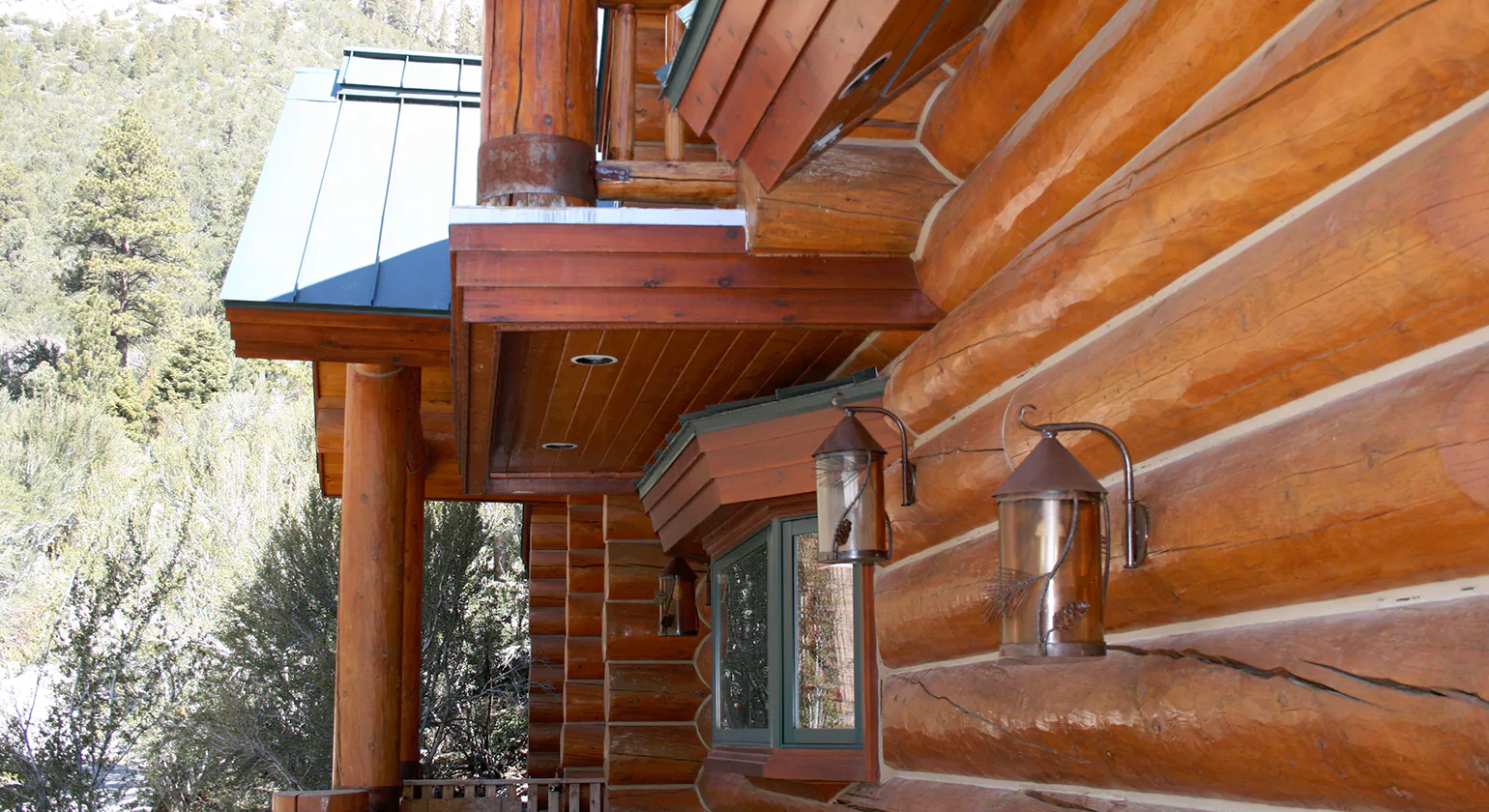
Understanding the cost structure helps homeowners decide whether half log siding is a smart investment or just a style preference.
Material and Installation Cost Ranges
Natural pine or cedar half log siding typically ranges from $4 to $9 per square foot, not including labor. Cedar is more expensive due to its durability. Engineered wood options may cost $3 to $6 per square foot, while steel log siding ranges from $7 to $12 per square foot but includes the bonus of low maintenance. Labor costs vary by region but generally add another $2 to $5 per square foot, depending on complexity and accessibility.
Long-Term Savings on Energy and Repairs
Properly installed half log siding—especially when combined with quality insulation—offers solid energy efficiency by regulating interior temperature and reducing heating and cooling bills. Modern materials like steel or fiber cement can save thousands over the years in repainting, sealing, and rot repair.
ROI for Resale and Appraisal Value
Homes with rustic exteriors often fetch higher resale prices due to their unique curb appeal. Buyers love the look of a cozy log cabin, and materials that mimic this style—without the work—are even more desirable. Upgraded siding can increase your property value by 5% to 15%, depending on market trends and region.
Budget Tips for Rustic Exteriors
Want the rustic charm without the big-ticket investment? Try combining steel or engineered wood siding with accents of natural wood on porches or gables for that authentic vibe. Buying materials during off-peak seasons, choosing pre-finished siding, or doing part of the prep work yourself can also help keep costs down.
Buying Guide: What to Know Before Choosing Half Log Siding
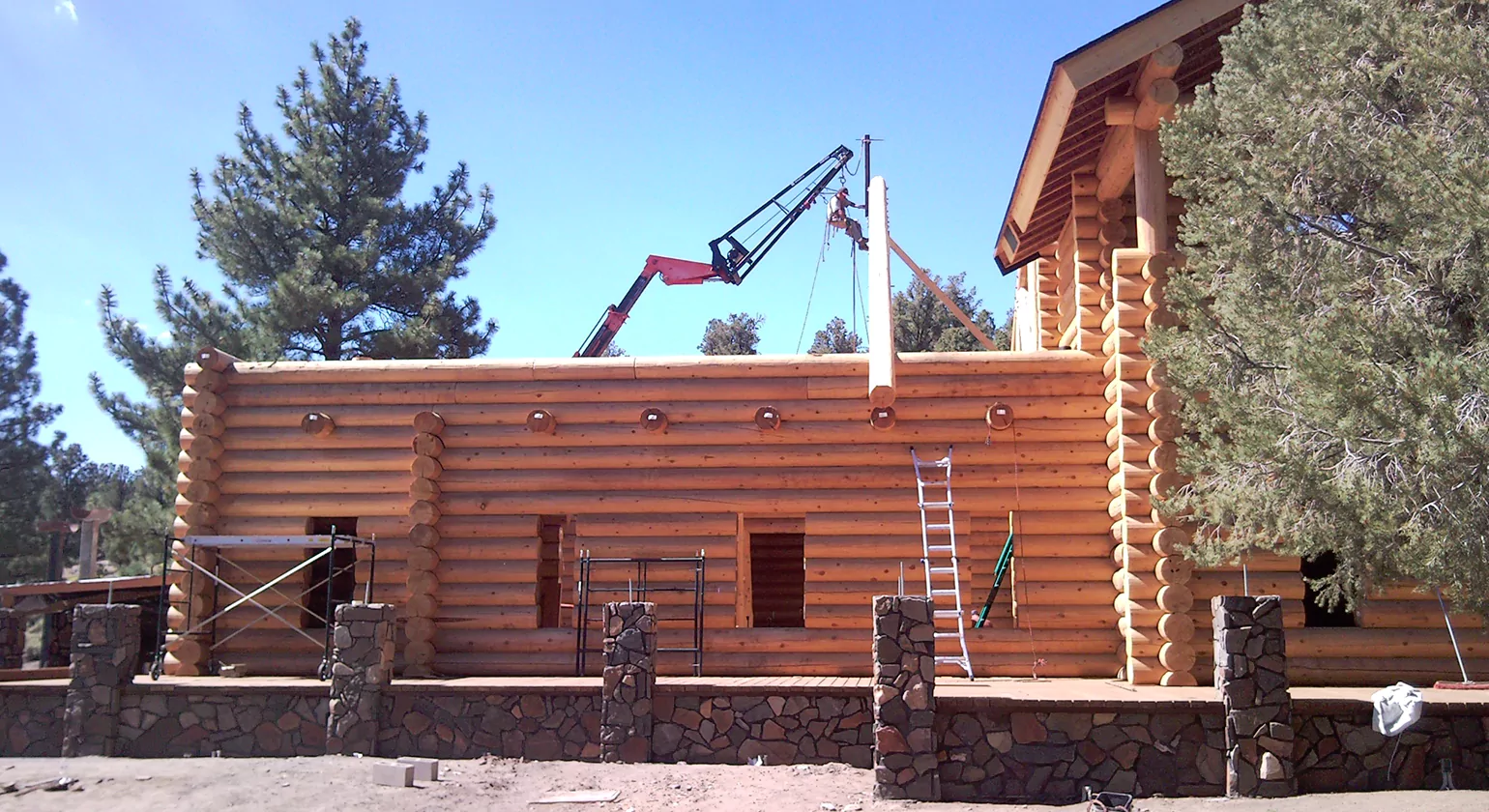
Before you invest in half log siding, it’s crucial to go beyond looks and assess quality, reliability, and sustainability. Here’s what to keep in mind:
Questions to Ask Your Contractor
Hiring the right contractor can make or break your siding project. Ask these questions:
- What experience do you have with half log siding installations?
- Do you offer references or completed projects I can see?
- What’s your estimated timeline, and do you guarantee it?
- How do you handle moisture barriers, insulation, and sealing?
- What type of maintenance will this siding require in my climate?
These questions help ensure your contractor isn’t just skilled in general siding but understands the unique challenges and beauty of log-style installations.
How to Spot Quality Materials
Not all half log siding products are created equal. Look for:
- Tight wood grain and consistent coloring (for natural wood)
- Pre-finished or factory-sealed panels for better durability
- Thicker gauge for engineered and steel products
- Realistic wood grain texture if choosing metal or fiber cement options
Avoid siding that’s overly dry, cracked, or lightweight—it won’t stand up to weather or time.
Warranty, Certifications, and Safety Ratings
Strong warranties are a sign of confidence in product quality. Look for:
- Limited lifetime warranties (especially with steel and engineered wood)
- Class A fire ratings if you’re in fire-prone areas
- Moisture resistance certifications to protect against mold and rot
- Energy Star-rated siding for better insulation performance
Always verify these details before purchase, especially if you’re using the siding to boost resale value or meet local building codes.
Eco-Friendly and Sustainable Siding Options
If sustainability matters to you, check for:
- FSC-certified wood harvested from responsibly managed forests
- Recycled-content steel siding
- Low-VOC finishes and stains
- Brands like TruLog and EverLog also focus on sustainable manufacturing processes and long-lasting materials that reduce environmental impact over time.
Choosing eco-friendly siding not only helps the planet but can also attract environmentally conscious buyers in the future.
Planning Your Half Log Siding Project Timeline
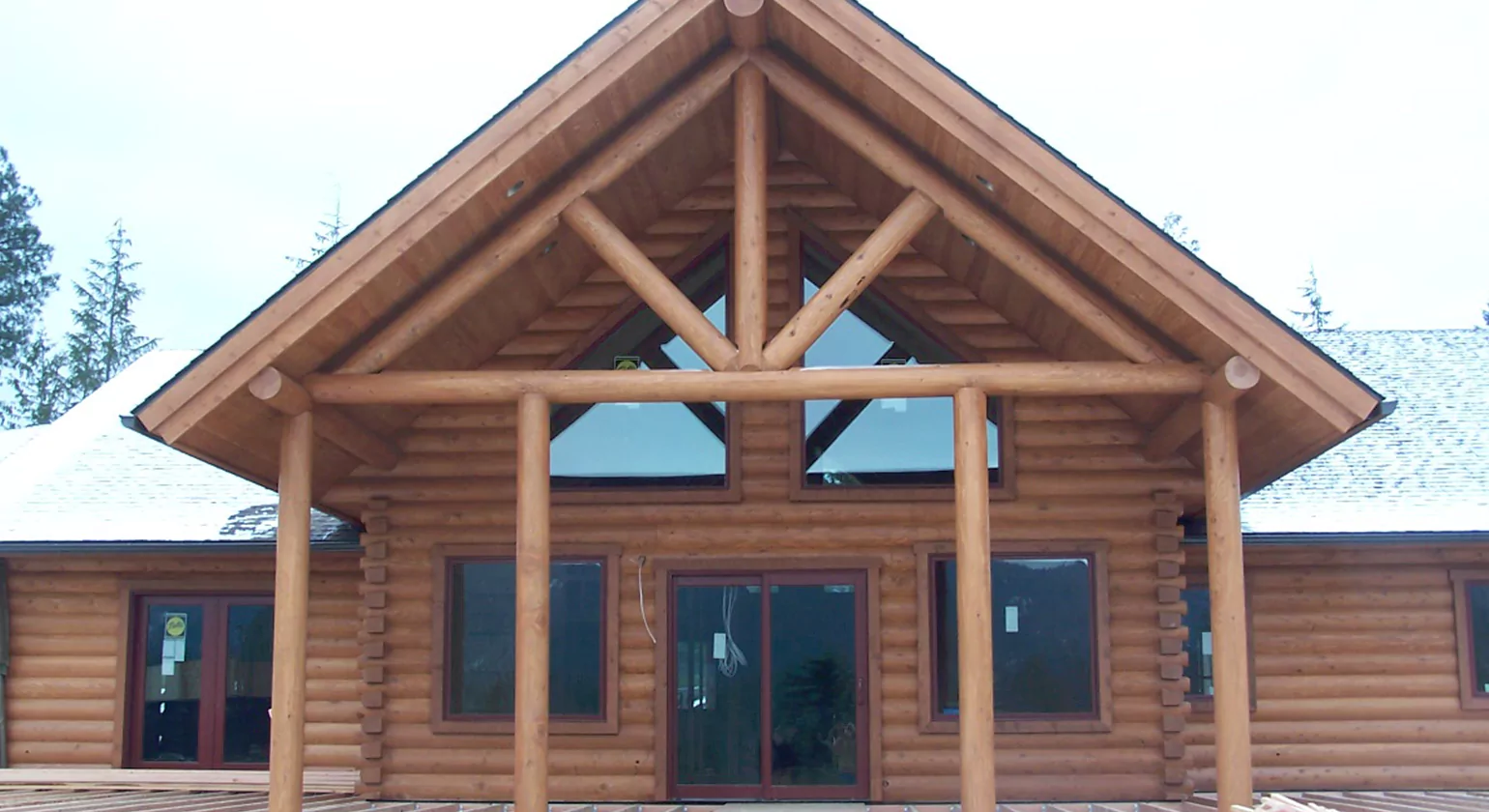
Whether you’re going DIY or hiring a pro, timing is key to a successful siding installation.
How Long Does Installation Really Take?
For an average-sized home (1,500–2,000 sq. ft.), half log siding installation usually takes:
- Professional crews: 5 to 10 business days
- DIY projects: 2 to 3 weeks, depending on your experience and schedule
Custom-cut materials, weather delays, and repairs to the existing structure can extend this timeframe.
Coordinating with Contractors and Seasonal Considerations
Spring and fall are ideal for siding projects due to mild weather. Summer installations may go faster due to longer daylight, but heat can affect adhesives and finishes. Winter installations are possible but require special tools and sealants.
If you’re hiring a contractor, book several weeks in advance—especially during busy seasons. Coordinate with any additional services like painters, window installers, or landscapers to avoid conflicts.
Timeline for DIY vs Professional Installation
DIY gives you full control, but it also requires:
- Time for learning the process (reading guides, watching tutorials)
- Renting or buying tools (saws, scaffolding, safety gear)
- Possibly more time for precision tasks like corners, trimming, and sealing
Professionals bring speed, expertise, and warranties—but at a higher labor cost. Consider your budget and comfort level before deciding.
Tips for Minimizing Disruption During Renovations
To keep life running smoothly during your siding project:
- Move cars and furniture away from work zones
- Inform neighbors of noise and delivery trucks
- Protect landscaping with tarps
- Set up temporary entryways if siding affects main doors
Planning ahead minimizes stress and ensures a smoother project timeline.
Expert Tips and Real Homeowner Stories
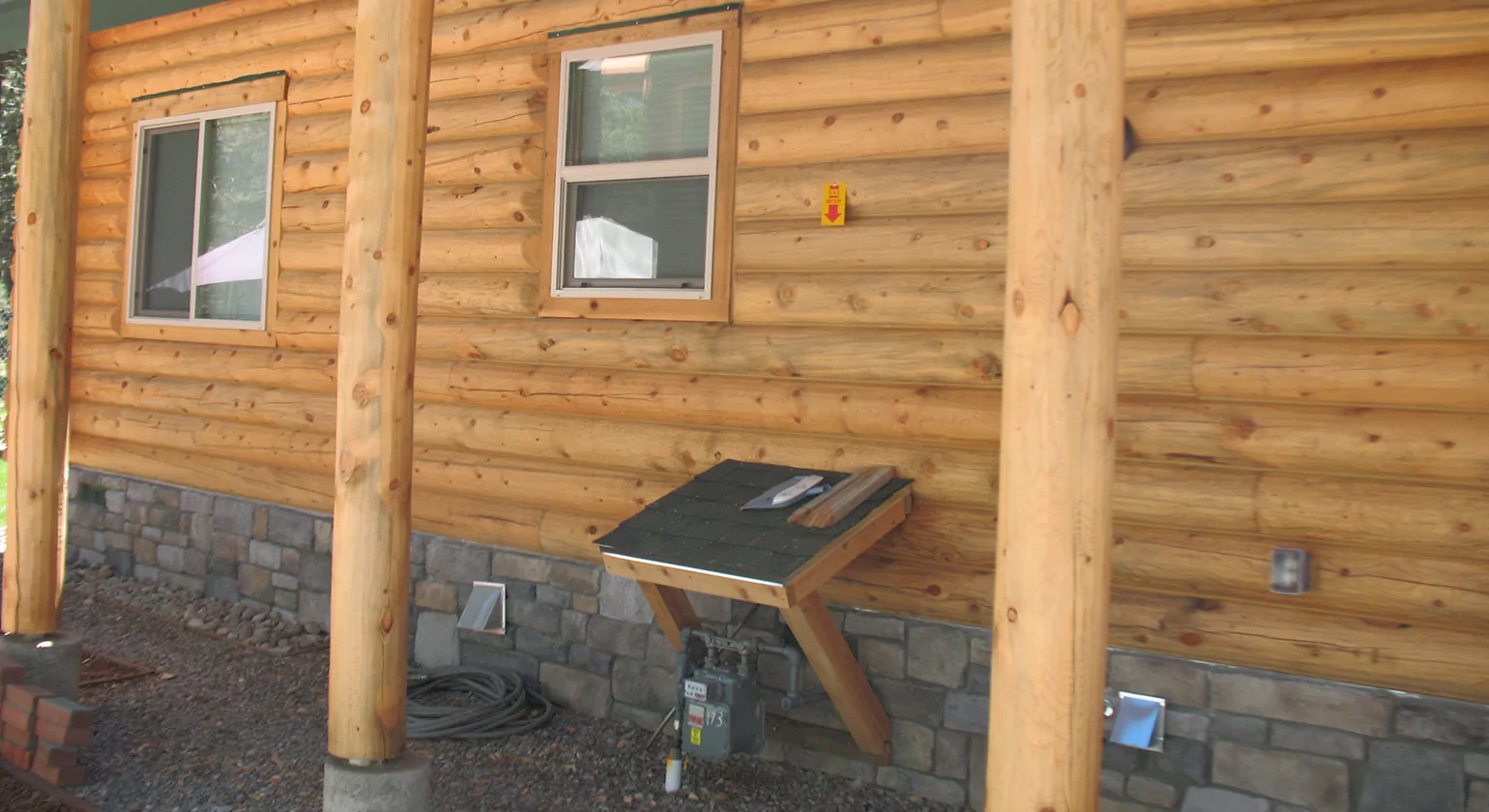
Real-world experiences provide valuable insights you won’t find in brochures. Here are some takeaways from builders, renovators, and homeowners who’ve completed half log siding projects.
Interview Insights from Builders and Renovators
We spoke to several contractors specializing in rustic exteriors:
- “Always install a moisture barrier before applying the first row. It’s your best defense against long-term rot,” says James M., a log home builder in Colorado.
- “Hidden fasteners are worth the extra cost—especially if you want that seamless, authentic log look,” notes Sarah L., a siding expert from Michigan.
- “Steel log siding is one of the smartest upgrades I’ve seen in 20 years. Looks great and zero callbacks for repairs.”
Before-and-After Half Log Siding Projects
Homeowners across the U.S. are transforming tired exteriors with half log siding:
- A mid-century ranch in Minnesota got a full makeover with cedar half logs and matching shutters, boosting its resale value by 12%.
- A lakeside vacation home in Idaho replaced old vinyl siding with steel half log panels—improving weather resistance and aesthetics while eliminating yearly staining.
- A DIY project in Oregon used reclaimed pine half logs for a tiny home. The owners reported feeling “like they live in a forest retreat every day.”
Lessons Learned from DIY Installs
Many homeowners who take the DIY route emphasize:
- Plan for double the time you think you’ll need.
- Invest in quality tools—cheap saws and drills slow you down.
- Don’t skip sealing the edges and seams—moisture finds every gap.
- Consider a hybrid approach: hire pros for tricky parts like corners or multi-story sections, then DIY the rest.
Expert Advice on Mixing Rustic with Modern
You don’t have to go full frontier to enjoy the log siding look. Designers recommend:
- Pairing half log siding with matte black trim and industrial lighting for a mountain-modern vibe
- Using smooth stucco or fiber cement on vertical accents to break up the log texture
- Incorporating large glass windows or modern doors to add light and contrast
These combos appeal to today’s buyers who want a balance of charm and convenience.
Conclusion
Half log siding brings timeless beauty, rustic charm, and practical performance to homes of all sizes. Whether you’re going all-natural with cedar or embracing the low-maintenance power of steel, there’s a perfect siding solution for every taste and budget.
With careful planning, expert advice, and smart material choices, you can enjoy the cozy, cabin-style exterior you’ve always dreamed of—without the headaches of traditional log homes.
From initial research and buying tips to installation timelines and modern design hacks, this guide has covered everything you need to make an informed, profitable decision. The best homes don’t just look good—they perform well, last long, and bring peace of mind. Half log siding does all three.
Know More>>> What Should You Include on Your Log Home Maintenance Checklist?
FAQ’S
1. What is half log siding and how is it different from full log siding?
Half log siding is a cladding material that gives the appearance of full logs without using entire tree trunks. It’s typically a rounded log cut in half and installed over traditional framing, offering the same rustic look with easier installation and lower cost.
2. Is half log siding real wood?
Yes, many half log siding options are made from real wood like pine or cedar. However, there are also engineered wood and steel siding alternatives that replicate the wood look with enhanced durability and less maintenance.
3. How much does half log siding cost per square foot?
The price varies by material. Real wood half log siding typically ranges from $6 to $12 per square foot, while engineered wood is slightly less. Steel log siding may cost $8 to $14 per square foot but saves money in the long run due to low maintenance.
4. How long does half log siding last?
With proper maintenance, natural wood half log siding can last 20 to 40 years. Steel and engineered wood options can last 40+ years, especially when installed correctly and maintained as needed.
5. Is half log siding difficult to maintain?
Natural wood siding requires regular sealing, staining, and pest control. In contrast, steel and engineered wood siding options offer a low-maintenance or even maintenance-free alternative while retaining a log-like appearance.
6. Can I install half log siding myself?
Yes, DIY installation is possible, especially for handy homeowners. However, it requires the right tools, patience, and knowledge of moisture barriers, fasteners, and trim work. Hiring a professional can ensure faster and more polished results.
7. What are the best materials for half log siding in 2025?
Top options include pine and cedar for natural wood lovers, and steel siding (like TruLog) for a maintenance-free, weather-resistant solution. Engineered wood is also a popular choice for affordability and consistent appearance.
8. How do I protect half log siding from pests and rot?
Apply high-quality sealants, inspect regularly for damage, and use treated or naturally resistant woods like cedar. Alternatively, choose steel siding, which resists both pests and moisture damage without chemicals.
9. Does half log siding increase home value?
Yes, especially in areas where rustic or cabin-style architecture is desirable. It boosts curb appeal, enhances energy efficiency (with proper insulation), and can improve resale value if well maintained.
10. Are there eco-friendly half log siding options?
Yes. Look for FSC-certified wood, steel siding with recycled content, and low-VOC finishes. Brands like TruLog also focus on sustainable production practices and long-lasting materials.

